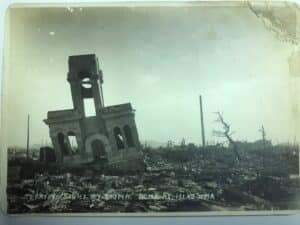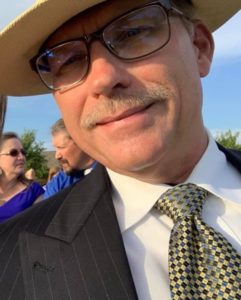/cloudfront-us-east-1.images.arcpublishing.com/mco/ZGQ6ZI46YNDDND4WYZ7NFYINXE.jpg)
In the annals of time great moments are recorded and among them one of the greatest was the conclusion of WWII. What began the involvement of the United States in WWII was a “sudden and deliberate attack” on Pearl Harbor on a sleepy Sunday morning in Hawaii. It ended almost four years later when brave and dedicated men brought it to an abrupt stop with the bombing of Hiroshima and Nagasaki, Japan, with a new weapon. That’s when the Japanese had had enough.
The fighting stopped when the Emperor agreed to surrender. One day later the Emperors voice was heard in a speech recorded August 14th, and broadcast on radio announcing the surrender on August 15, 1945. The official signing of the Instrument of Surrender occurred September 2, 1945.
Bloody fighting throughout the Pacific theater had proven the tenacity and dedication of the Imperial Japanese Army. They were equaled and excelled by tenacious and dedicated American men fighting to avenge the blood of their kindred neighbors in the ‘sucker punch’ launched at Pearl Harbor December 7, 1941, and the security of the family and friends back home.
General Douglas MacArthur and the surrender of Japan on September 2, 1945, VJ Day.
In August 1945, in a quick one, two, punch, the United States brought Japan to their knees following the atomic bombing of the two Japanese cities of Hiroshima (August 6th) and Nagasaki (August 9th). The Japanese Emperor was now prepared to stop fighting, on his terms.
General Douglas MacArthur had other things in mind and demanded unconditional surrender on his terms on board the USS Missouri. MacArthur was no nonsense and the Emperor submitted to his better.
The formal surrender of Japan took place aboard the battleship Missouri in Tokyo Bay. This was the same place where over 90 years before, in 1854, Navy Commodore Matthew Perry had signed a treaty with Japan to open up trade with the United States. Japanese Foreign Minister Mamoru Shigemitsu and Gen. Yoshijiro Umezu, who were later convicted of war crimes, signed the Instrument of Surrender aboard the USS Missouri.
Gen. Douglas MacArthur, acting as Supreme Commander of Allied Forces, signed the Instrument of Surrender for the United Nations. Fleet Adm. Chester Nimitz signing for the U.S. Delegates from the allied nations: Great Britain, France, Australia, Canada, the Netherlands, New Zealand, China and the Soviet Union. The ceremony lasted about an half hour.
The Aftermath of Surrender
The Instrument of Surrender required that the nation of Japan must cease all military actions, liberate prisoners of war and others in captivity and follow other terms of the surrender. The surrender began a seven-year U.S. occupation headed by Gen. Douglas MacArthur, where he oversaw the writing of their Constitution. MacArthur was loved by the Japanese people because he treated them with kind but firm leadership. The occupation lasted until the San Francisco Peace Treaty took effect in April 1952, of which MacArthur was not an official participant because of political pettiness. The treaty allowed Japan’s return to the international community. Since then Japan has served as a base of operations for the US military and become a major U.S. ally in defense and other areas.
Below are a few select photographs from the personal collection of Billy Oswald.
Victory over Japan Day (VJ Day)
Victory over Japan Day (VJ Day) took place 75 years ago on August 14th, 1945.
Gen. Douglas MacArthur, aboard the USS Missouri, September 2, 1945, on the occasion of the formal unconditional surrender of the Empire of Japan. Personal photo courtesy Billy Oswald.

Hiroshima, August 1945. Personal photo courtesy Billy Oswald.

Hiroshima, August 1945. Personal photo courtesy Billy Oswald.

Hiroshima, August 1945. Personal photo courtesy Billy Oswald.

Hiroshima, August 1945. Personal photo courtesy Billy Oswald.
We commemorate the event and the men who were part of the Greatest Generation in one of the biggest events in history. And we thank them for their service.
Thank you United States WWII veterans for your service in defense of our country! Whether in the European or the Pacific theater, you answered the call to duty when your country needed you, and responded to defeat an enemy. All Americans are grateful for your commitment to duty and your sacrifice!
America is kept secure and free by the brave sentinels who face adversity, danger and potential death from the enemies of our country both foreign and domestic. Thank a veteran today!

Please visit our sponsors and donate to support The Standard on this page.



 RSS - Posts
RSS - Posts